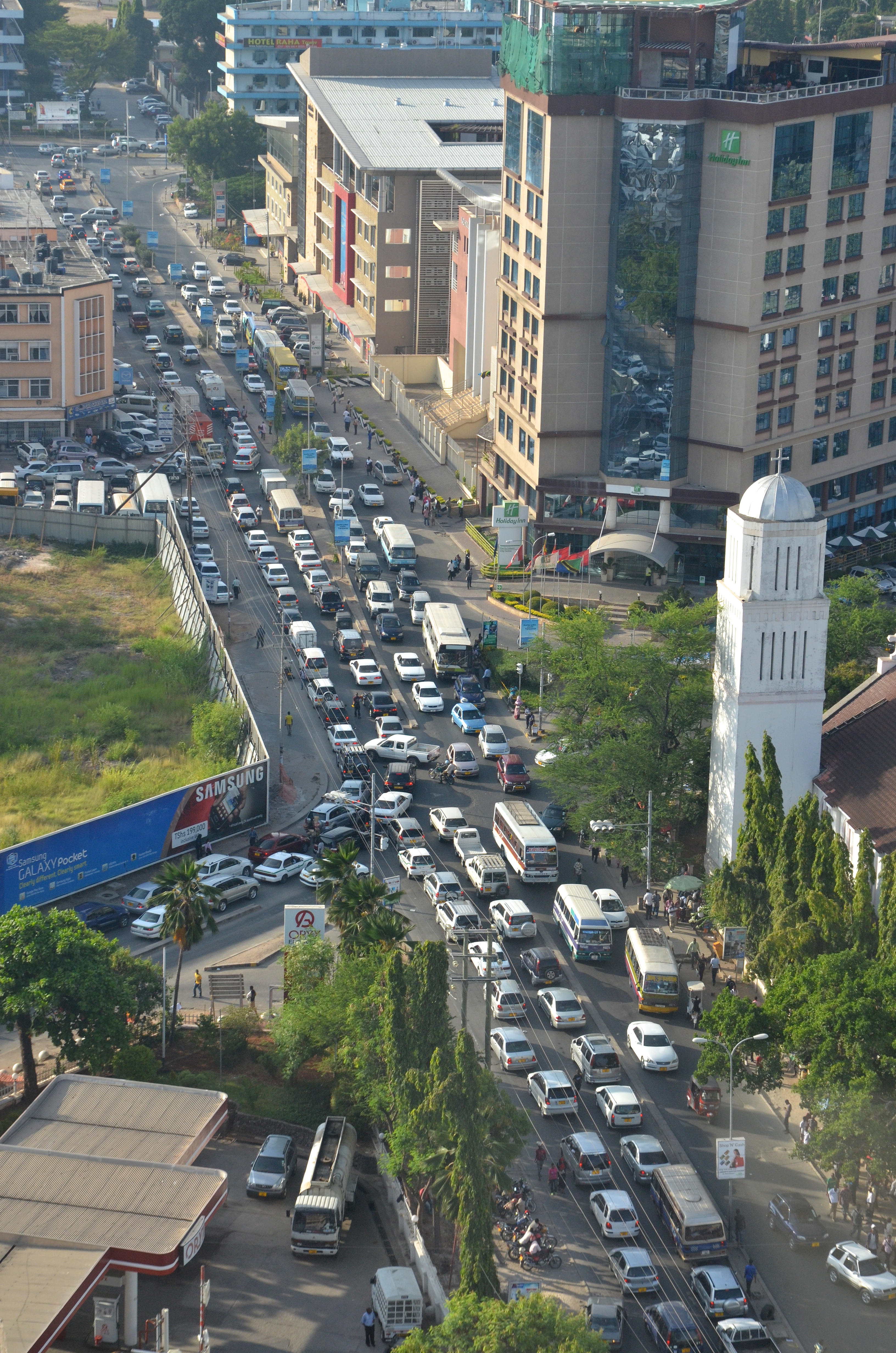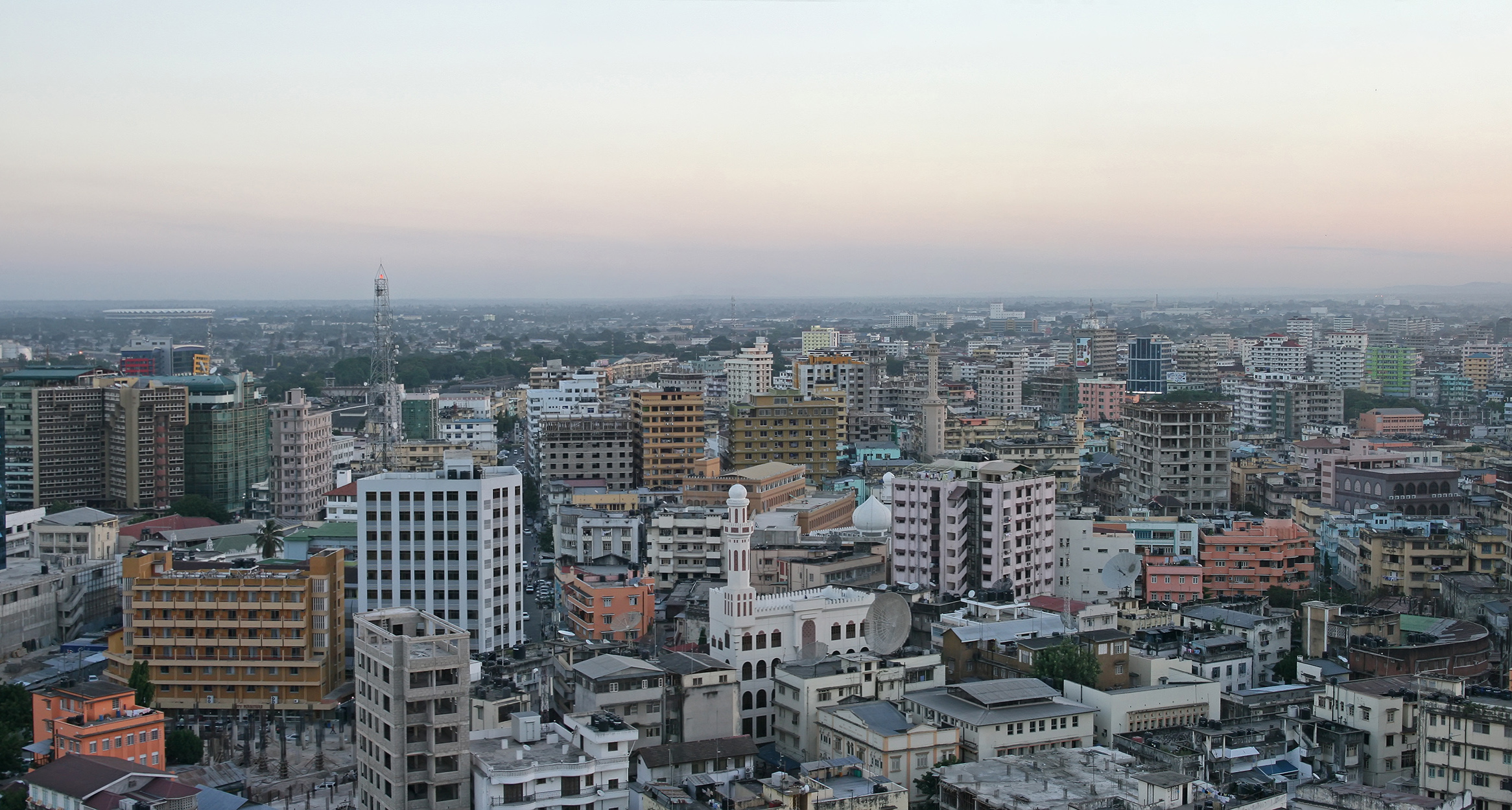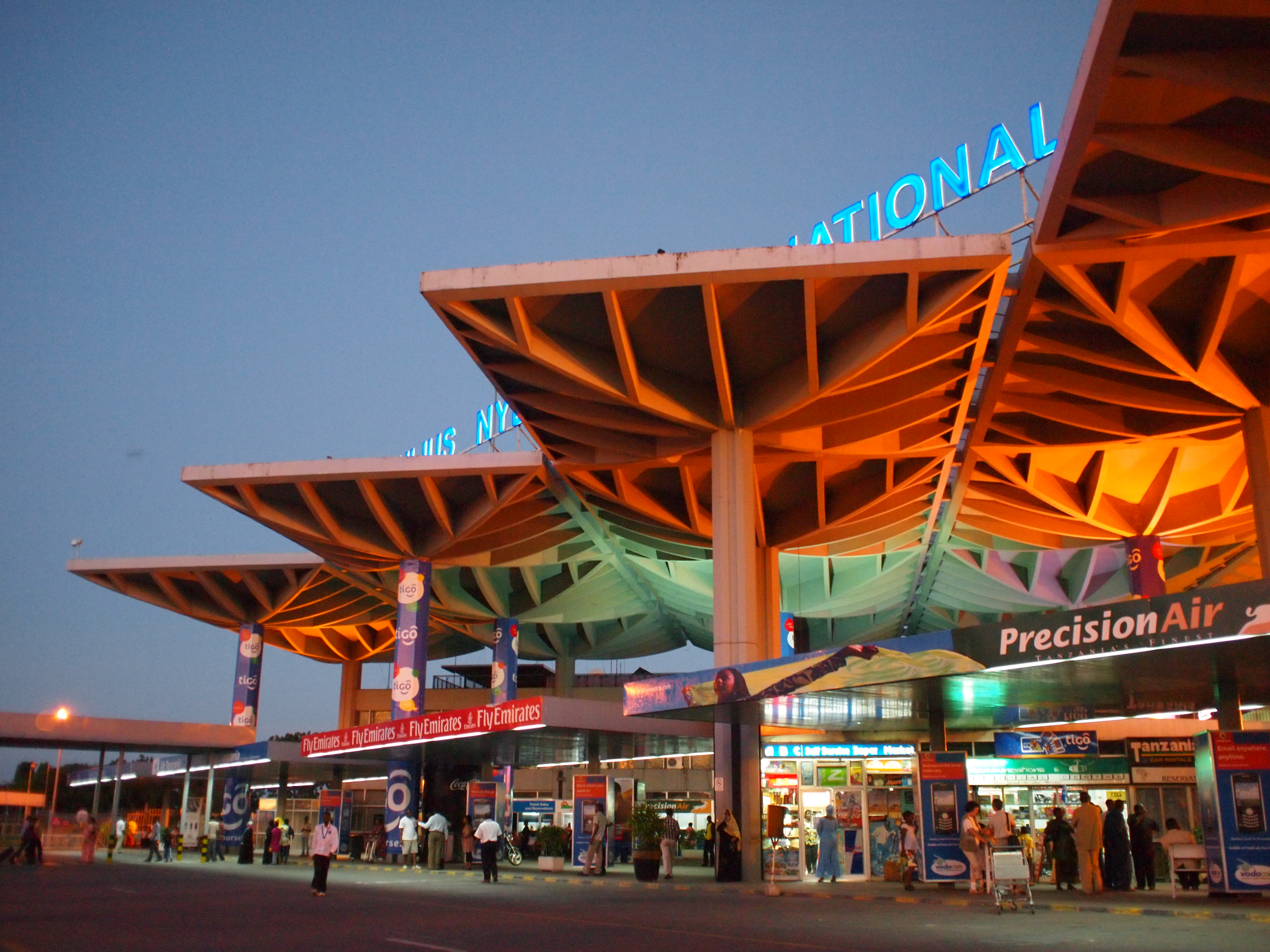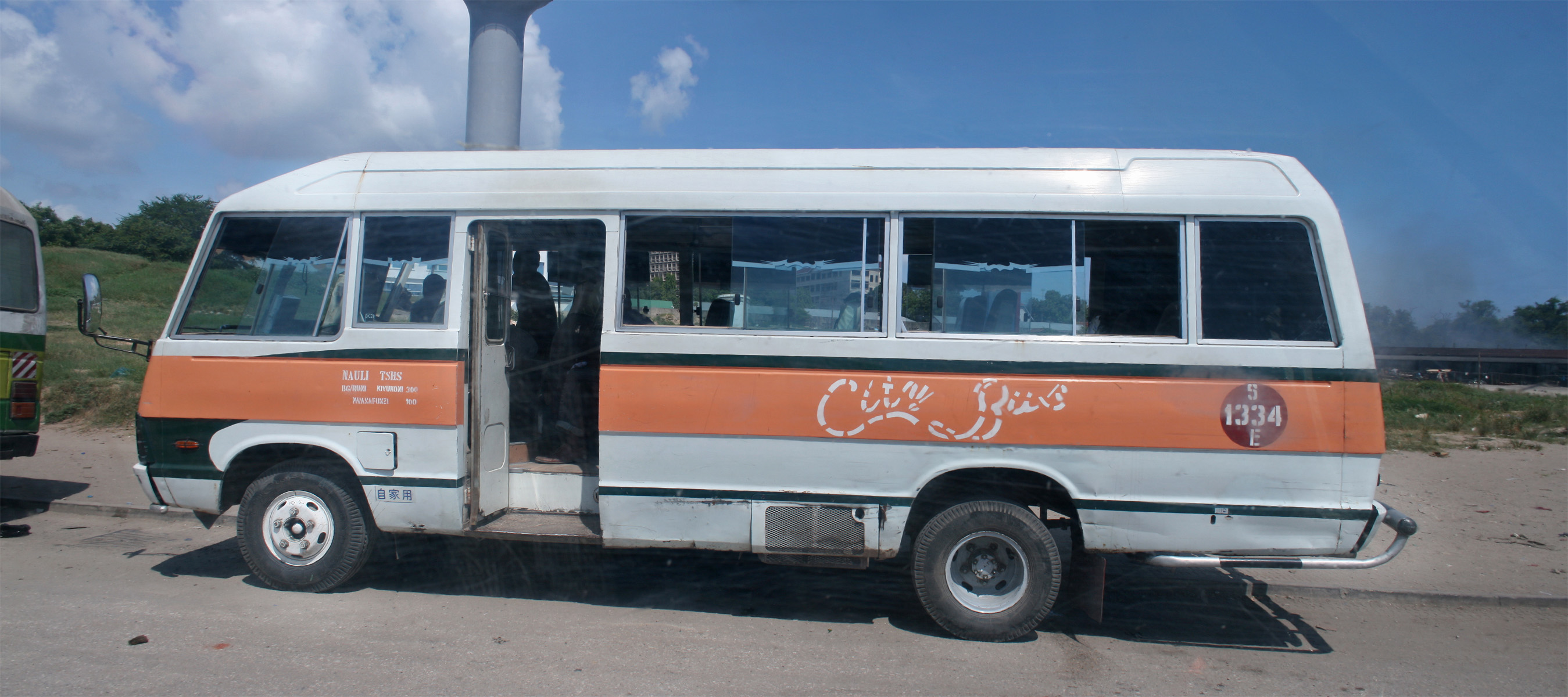|
Kariakoo
Kariakoo is a ward in the Ilala District of Dar es Salaam, Tanzania. It has a population of 9,405 (2002). The name derives from a corruption of the British " Carrier Corps", that used to be based in this area. Today, Kariakoo is mainly known for its extensive market, that spans several city blocks. History In pre-colonial times there was a large village in the area now known as Kariakoo. This village was frequently raided by slave traders. In the latter half of the 19th century, the area became a ''shamba'' (farm) belonging to the Sultan of Zanzibar. During German rule, 200 hectares of the shamba were bought by a German businessman named Schoeller, who rented the land to the Africans. At the same time, Dar es Salaam began to grow, and while Europeans built their houses in exclusive areas such as Oyster Bay, Kariakoo became Dar's main African settlement. In 1913, 15.000 out of the total 24.000 African inhabitants of Dar lived in Kariakoo. In 1914 the German administration b ... [...More Info...] [...Related Items...] OR: [Wikipedia] [Google] [Baidu] |
Dar Es Salaam
Dar es Salaam (; from ar, دَار السَّلَام, Dâr es-Selâm, lit=Abode of Peace) or commonly known as Dar, is the largest city and financial hub of Tanzania. It is also the capital of Dar es Salaam Region. With a population of over six million people, Dar is the largest city in East Africa and the List of urban agglomerations in Africa, seventh-largest in Africa. Located on the Swahili coast, Dar es Salaam is an important economic centre and is one of the fastest-growing cities in the world. The town was founded by Majid bin Said of Zanzibar, Majid bin Said, the first Sultanate of Zanzibar, Sultan of Zanzibar, in 1865 or 1866. It was the main administrative and commercial center of German East Africa, Tanganyika (territory), Tanganyika, and Tanzania. The decision was made in 1974 to move the capital to Dodoma and was officially completed in 1996. Dar es Salaam is Tanzania's most prominent city for arts, fashion, media, film, television, and finance. It is the capital ... [...More Info...] [...Related Items...] OR: [Wikipedia] [Google] [Baidu] |
Dar Es Salaam Bus Rapid Transit
Dar es Salaam bus rapid transit is a bus rapid transit system that began operations on 10 May 2016 in Dar es Salaam, Tanzania. The transit system consists of 6 phases and the construction of the first phase began in April 2012 by the Austrian construction company Strabag International GmbH. Construction of the first phase was completed in December 2015 at a total cost of €134 million funded by the African Development Bank, World Bank and the Government of Tanzania. The first phase of the project has a total length of 21.1 kilometers with dedicated bus lanes on three trunk routes with a total of 29 stations. The entire system is operated by The Usafiri salama Dar es Salaam Rapid Transit (UDA-RT) under the surveillance of the Surface and Marine Transport regulatory authority (Sumatra) Currently, the route is serviced by a fleet of 140 Chinese built Golden Dragon buses, providing express and local service for 18 hours daily from 05:00am to 11:00pm. In September 2022, BRT Fleet s ... [...More Info...] [...Related Items...] OR: [Wikipedia] [Google] [Baidu] |
Ilala District
Ilala District (Officially known as Ilala Municipal Council ) is one of five districts in Dar es Salaam, Tanzania, the others being Temeke to the South and Kinondoni to the North and Ubungo to the northwest. The 2012 National Tanzania Census states the population for Ilala as 1,220,611. Wards Ilala District is subdivided administratively into 3 divisions and 26 wards. The wards are listed below: * Buguruni * Chanika * Gerezani * Gongolamboto * Ilala * Jangwani * Kariakoo * Kimanga * Kinyerezi * Kipawa * Kitunda * Kisutu * Kivukoni * Kivule * Kiwalani * Majohe * Mchafukoge * Mchikichini * Msongola * Pugu * Segerea * Tabata * Ukonga * Upanga East * Upanga West Upanga West is an administrative ward in the Ilala District of the Dar es Salaam Region of Tanzania Tanzania (; ), officially the United Republic of Tanzania ( sw, Jamhuri ya Muungano wa Tanzania), is a country in East Africa within the ... * Vingunguti References {{Districts of Dar es ... [...More Info...] [...Related Items...] OR: [Wikipedia] [Google] [Baidu] |
Simba Sports Club
Simba Sports Club is a football club based in Kariakoo, Dar es Salaam Tanzania, Founded in 1936, the club, which broke away from another Tanzania Giants, Dar Young Africans was named Queens, in honor of her Majesty, the Queen of England. The Club had several name changes from Queens to Eagles, then, Sunderland. In 1971 they were renamed Simba ( Swahili for "Lion"). Simba SC have won 21 league titles and five domestic cups, and have participated in the CAF Champions League multiple times. They are also one of the biggest clubs in East Africa, having won the CECAFA Club Championship six times. Simba play their home games at the Benjamin Mkapa Stadium. In 2022, Simba were the fastest growing Instagram account among football clubs, with 1.9 million followers and a growth of 89% from the previous year. The club is one of the richest in East Africa, with a total budget of Sh 6.1 Billion (equivalent to $5.3 million) unveiled for the 2019/2020 season. Honours Domestic Tan ... [...More Info...] [...Related Items...] OR: [Wikipedia] [Google] [Baidu] |
Carrier Corps
The Carrier Corps was a labour corps created in Kenya during the World War I, First World War to provide military labour to support the East African Campaign (World War I), British campaign against German Army (German Empire), German army forces in East Africa. Service Whereas the Germans, commanded by Paul von Lettow-Vorbeck, armed and trained African Askaris to create an effective Guerilla warfare, guerrilla force able to live off the land; the British attempted to deploy British Indian Army, Indian Army troops under Jan Smuts and keep the King's African Rifles as internal security troops, with limited success. Not only were they unused to the terrain, the need to feed a large body of foreign soldiers presented severe logistical problems, as troops in the interior had to be supplied over long distances without rail or road lines of communication. To deliver one kilogram of rice to the interior it could take 50 kilograms of rice at the coast—most of it being consumed en rout ... [...More Info...] [...Related Items...] OR: [Wikipedia] [Google] [Baidu] |
Regions Of Tanzania
Tanzania is administratively divided into thirty-one regions ('' mkoa''). History * In 1975, Tanzania had 25 regions. In the 1970s, the name of the Ziwa Magharibi Region (West Lake Region) changed to Kagera Region. * In 2002, Manyara Region was created out of part of Arusha Region. * In 2012, four regions were created: Geita, Katavi, Njombe, and Simiyu. * In 2016, Songwe Region was created from the western part of Mbeya Region. List of regions Tanzania is subdivided into 31 regions (as of 2016). See also *Districts of Tanzania *List of regions of Tanzania by GDP This is a list of regions of Tanzania by GDP and GDP per capita. Data does only include values for Mainland Tansania without Zanzibar. List of regions by GDP Regions (2011 borders) by GDP in 2018 according to data by the National Bureau of Sta ... * ISO 3166-2:TZ Notes References {{Articles on first-level administrative divisions of African countries Subdivisions of Tanzania Tanzania, Regions T ... [...More Info...] [...Related Items...] OR: [Wikipedia] [Google] [Baidu] |
African People
The population of Africa has grown rapidly over the past century and consequently shows a large youth bulge, further reinforced by a low life expectancy of below 50 years in some African countries. Total population as of 2020 is estimated at more than 1.3 billion, with a growth rate of more than 2.5% p.a. The total fertility rate (births per woman) for Sub-Saharan Africa is 4.7 as of 2018, the highest in the world according to the World Bank. The most populous African country is Nigeria with over 206 million inhabitants as of 2020 and a growth rate of 2.6% p.a. Population Genetics History Alternative Estimates of African Population, 0–1998 AD (in thousands) Source: Maddison and others. (University of Groningen). Shares of Africa and World Population, 0–2018 AD (% of world total) Source: Maddison and others (University of Groningen) and others. Vital Statistics 1950–2021AD Registration of vital events in most of Africa is incomplete. The website Our World in ... [...More Info...] [...Related Items...] OR: [Wikipedia] [Google] [Baidu] |
Julius Nyerere International Airport
Julius Nyerere International Airport is the international airport of Dar es Salaam, the largest city in Tanzania. It is located approximately southwest of the city centre. The airport has flights to destinations in Africa, Asia, Europe, and the Middle East. It is named after Julius Nyerere, the nation's first president. History In October 2005, "Dar es Salaam International Airport" (DIA) was renamed "Mwalimu Julius Kambarage Nyerere International Airport" and on 1 November 2006, "Julius Nyerere International Airport". A total of 9,501,265 passengers used the airport from 1980 to 2004, averaging 2,770 passengers per day. In April 2013, the Tanzania Airports Authority signed a TSH 275 billion contract with BAM International of the Netherlands for the construction of the first phase of Terminal III, with a capacity of 3.5 million passengers per year. In November 2015, the second phase was also awarded to BAM, at a contract price of US$110 million, and will add capacity for ... [...More Info...] [...Related Items...] OR: [Wikipedia] [Google] [Baidu] |
Jakaya Mrisho Kikwete
Jakaya Mrisho Kikwete (born 7 October 1950) is a Tanzanian politician who was the fourth president of Tanzania, in office from 2005 to 2015. Prior to his election as president, he was the Minister for Foreign Affairs from 1995 to 2005 under his predecessor, Benjamin Mkapa. He also served as the chairperson of the African Union from 2008–2009 and the chairman of the Southern African Development Community Troika on Peace, Defence and Security from 2012–2013. Kikwete who is of Kwere heritage, was born and raised in Msoga, Chalinze District in Pwani Region and attended the university of Dar es Salaam. Education Between 1959 and 1963 Kikwete attended Karatu Primary School and Tengeru School from 1963 to 1965, both in Arusha Region. After Tengeru, Kikwete moved back to home to Pwani Region and attended Kibaha Secondary School for his O-levels, which took place between 1966 and 1969. Then he moved to Tanga Region studied at the Tanga Technical Secondary School for his adv ... [...More Info...] [...Related Items...] OR: [Wikipedia] [Google] [Baidu] |
Dala Dala
Dala dala are minibus share taxis in Tanzania.Thoughts On Dala Dala Buses isteptanzania.wordpress.com, May 29, 2009 These converted trucks and minibuses are the primary public transportation system in the country. While the name originates from the English word "dollar", they are also referred to as ''thumni''. Before minibuses became widely used, a truck with benches placed in the was the typical Tanzanian privately owned public transport. Called ''chai maharagwe'', these were popular and also used to transport and deliver goods along the route 1990. While ''dala dala'' may run ... [...More Info...] [...Related Items...] OR: [Wikipedia] [Google] [Baidu] |
German East Africa
German East Africa (GEA; german: Deutsch-Ostafrika) was a German colony in the African Great Lakes region, which included present-day Burundi, Rwanda, the Tanzania mainland, and the Kionga Triangle, a small region later incorporated into Mozambique. GEA's area was , which was nearly three times the area of present-day Germany and double the area of metropolitan Germany at the time. The colony was organised when the German military was asked in the late 1880s to put down a revolt against the activities of the German East Africa Company. It ended with Imperial Germany's defeat in World War I. Ultimately GEA was divided between Britain, Belgium and Portugal and was reorganised as a mandate of the League of Nations. History Like other colonial powers the Germans expanded their empire in the Africa Great Lakes region, ostensibly to fight slavery and the slave trade. Unlike other imperial powers, however they never formally abolished either slavery or the slave trade and preferre ... [...More Info...] [...Related Items...] OR: [Wikipedia] [Google] [Baidu] |







